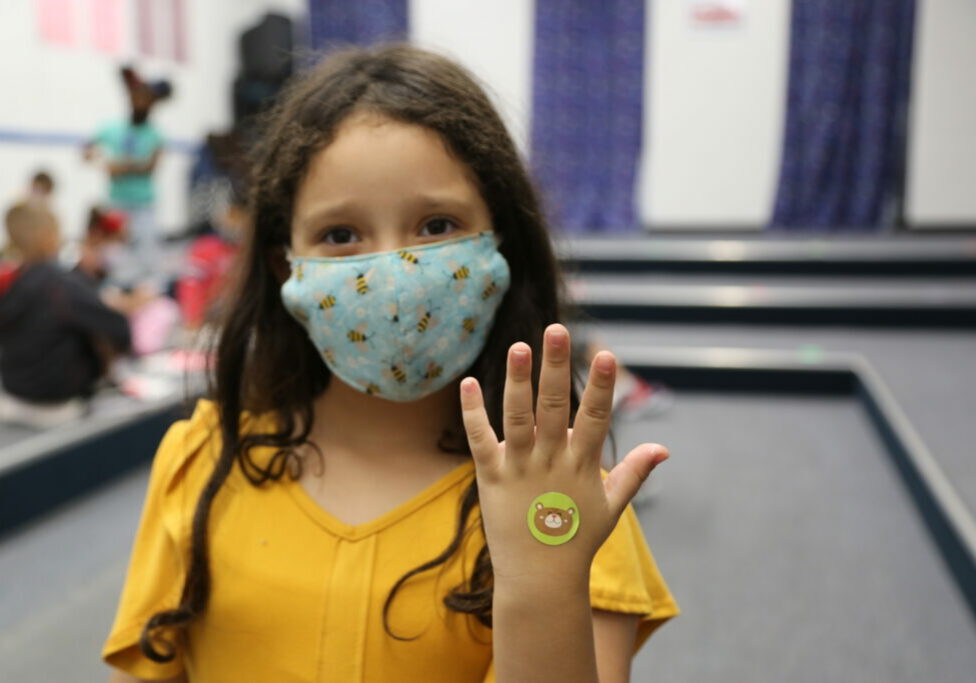Using International Dot Day to create connections for young learners
By Kathryn Coulibaly
The music is pumping, the students are dancing and singing, and the teacher is wearing a wireless headset and commanding the stage like the rock star she is. It’s just a typical Wednesday at Durban Avenue School in Hopatcong.
Sussex County Teacher of the Year Shawna Longo likes to get the students up and moving as soon as possible. For this class of 17 first graders, it’s a welcome opportunity to move and sing and unleash their inner rock stars.
In 2019, she received the inaugural 2019 Teach Rock Star Teacher Award from The Rock and Roll Forever Foundation. Gov. Phil Murphy and legendary New Jersey rocker Steven Van Zandt presented the award, a platinum record proudly hanging on Longo’s wall at home. Van Zandt returned to watch Longo teach a lesson.
“Mr. Van Zandt had a blast interacting with the students and the parents could not contain their excitement over meeting him,” Longo said.
Longo’s district became the first district to partner with the program and uses its free curriculum and resources.
“Every student in our district receives at least one Teach Rock lesson a month, which is full-on arts integration and STEAM,” Longo said.
The program is another opportunity for the district to bring the world to their small town. Longo is constantly looking for ideas and strategies to utilize the arts to teach students about the world around them.
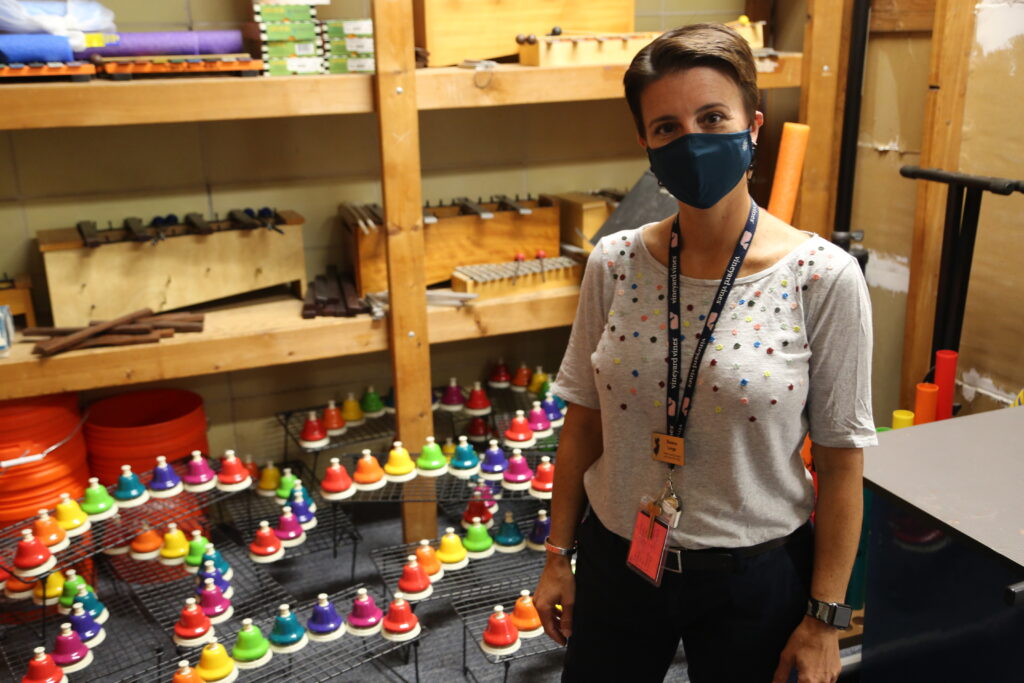
“In my school, I serve as the music teacher teaching every child within the school, and I also am an arts integration specialist,” Longo said. “So I am afforded the opportunity to work with all the teachers to develop authentic arts-integrated lessons across the content areas, and then to go in and teach those lessons with my colleagues. It’s an amazing opportunity to work together and increase the collaborative culture and climate within our school, while pulling in the arts and teaching social emotional learning.”
Today’s theme is centered on dots, inspired by The Dot by Peter Reynolds, a book in which Vashti, a young artist, doubts her abilities. When her teacher encourages her to look at the dot she has drawn in a different, more creative way, it unlocks the power of her imagination. The book follows her as she explores all the things that the dot could be, and, in the end, she inspires another student to be more creative and self-confident.
In Longo’s classroom, students stand on dots to help them socially distance. Today, those dots are tied into the theme of International Dot Day, held annually around Sept. 15, the date that The Dot was officially released.
Longo uses Reynolds’ other books, Sky Color and Ish, in her classroom. “The storylines are inspiring for students and present social-emotional learning concepts in an exciting and relatable way. The illustrations are also done in a way that supports literacy through analyzing the pictures from an artist’s perspective to support the text and expand on the storyline.”
International Dot Day opens the space for classes to explore the themes of bravery, creativity and self-expression through The Dot. And, these themes naturally align with the five social-emotional competencies of self-awareness, self-management, responsible decision making, social awareness and relationship skills. These skills are experienced through the powerful and compelling message in this children’s book, which encourages students to try something new and believe in themselves: “Make your mark and see where it takes you!”
And there isn’t a better time to focus on SEL, particularly in early childhood education. Like many adults, students are still working to process the emotional rollercoaster that we have all been on since March 2020. Many of our youngest population haven’t had the same exposure to preschool education, playdates, and all that typically comes with those early years. They are coming into school with an even smaller foundation—educationally and emotionally. By authentically integrating social-emotional learning into our classrooms, we are able to help build a solid foundation of skills that they can use in all facets of their life.
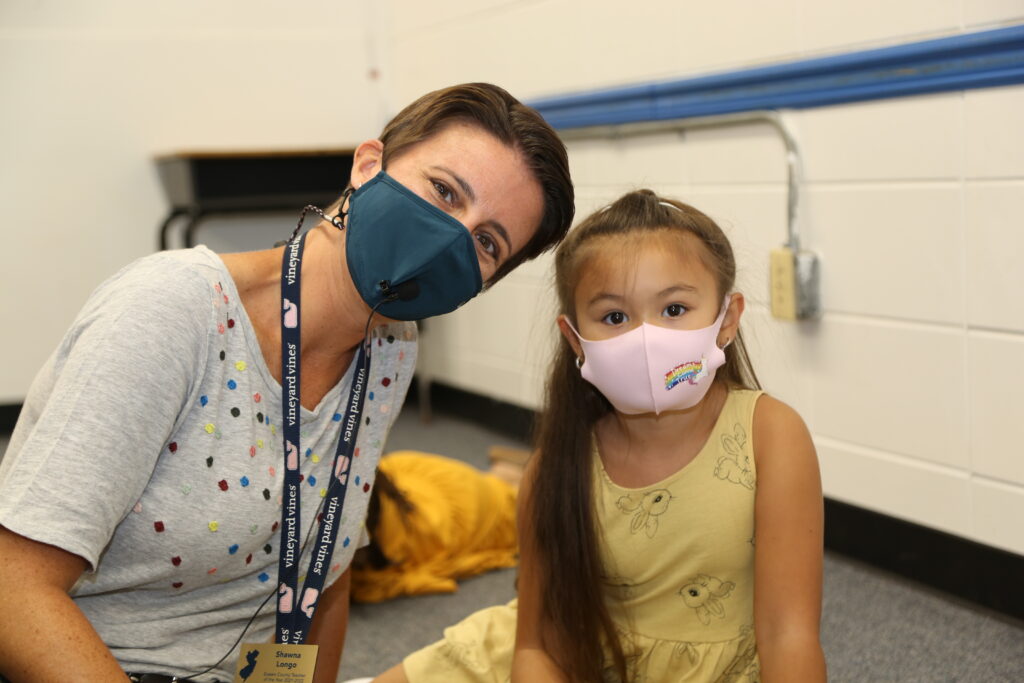
Three critical words to keep in mind when integrating SEL into a classroom: embedded, intentional, and sustained. This isn’t just one lesson that “checks the box.” SEL needs to be an intentionally embedded practice that is sustained throughout the year within every classroom.
The arts provide students with an outlet to process and express their emotions and feelings. Children also naturally and authentically connect with the arts, providing an opportunity for students to internalize skills. New Jersey has been leading the research and advocacy of the synergistic connections between social emotional learning and the visual and performing arts. More information can be found at selarts.org.
Longo works closely with other subject area teachers to show students the interconnectedness of what they are learning and how they can apply it in their lives. Learning about different cultures and different ways that people go about things all through a lens that they feel comfortable with, which is music and all of the arts, because I am not just the music teacher. It is every teacher’s responsibility to tear down our silos and make as many connections between and across content areas and culture for our students so that they can better see and understand our world.
“I love working with the little kiddos,” Longo said. “I love laying that foundation. I just switched to what I call little land about two years ago after 16 years of middle school and high school. This shift really empowered me to look at music and teach through a different lens—through these young children’s minds. I am passionate about learning and music is my vehicle, along with the arts, in general, to drive that passion and instill a love of learning in students. Plus, having fun while they’re doing it!”
One instance where Longo was able to really focus on SEL through a culturally responsive lens occurred through a project with the Asian Pacific American Center at the Smithsonian Institute. Longo was tasked with working with an artist to create an arts integrated lesson, pulling in a global perspective. Theirs was titled, Portraits of a Global Perspective, to really drive home social-emotional learning and culturally responsive concepts through an arts lens.
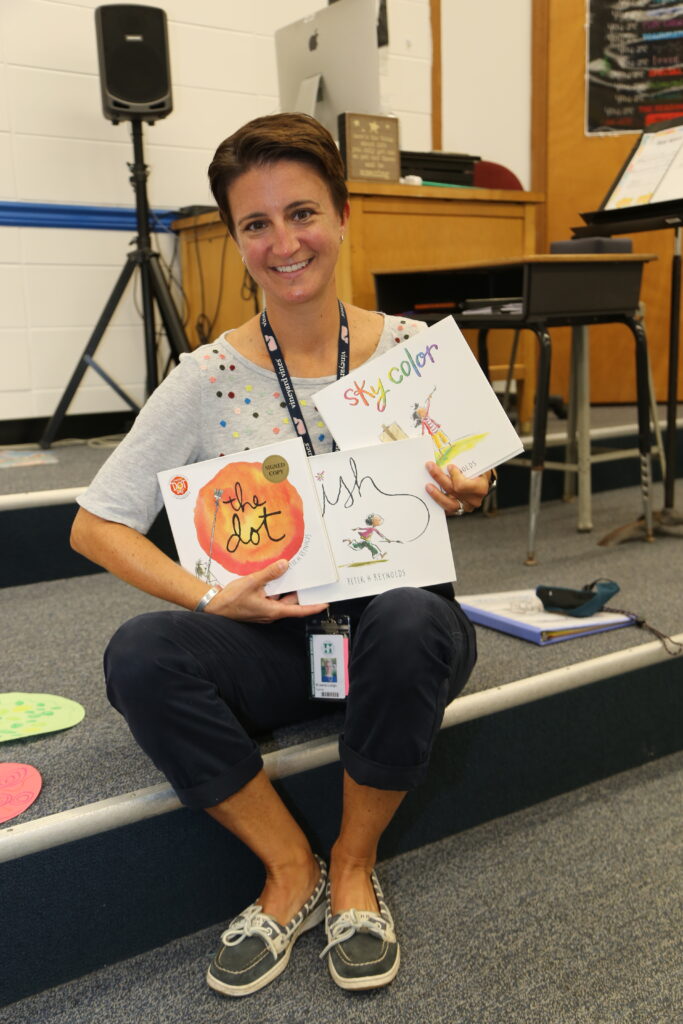
The module series curated four distinct artmaking lessons that cross different cultures and SEL competencies. Each educator was paired with an artist and an art historian to learn more about each other’s lives, why they teach, why they create and/or study art, and what drives each of their practices. Through collaborative conversations, ideas for these artmaking lessons emerged that intertwine the educator’s, artist’s, and art historian’s practice and vision, while centering opportunities for students to reflect on their own global interconnections through creating art.
Longo was paired with artist Helen Zughaib, professional artist and author of the book, Stories My Father Told Me. Although their background, experiences, and journeys seemed very different on the surface, there were similar underlying themes. It was through these connections that emerged an arts integrated lesson focusing on increasing students’ global perspective through empathy while building social-emotional skills focusing on self-awareness, social awareness, responsible decision-making, and relationship skills. The complete modules include a full lesson plan, step-by-step Learning Lab collection with images and videos illustrating steps in the artmaking process, and a recorded webinar where visitors can meet the creators of the lesson and see how it could be used with students. More information can be found at smithsonianapa.org/learn/making-art/#01.
Through experiences like these where students are given a voice to speak about their experiences and learn about the experiences of others, Longo works to light that spark, so that in whatever capacity they want, her students are comfortable being in front of people. They are comfortable expressing who they are, and they’re comfortable exploring things that they may never have tried before.
It is also important to partner with the support system existing within our schools when approaching SEL and culturally responsive teaching. For instance, Longo works hand in hand with the school counselor to further understand how she can assist students in processing their emotions and how to respond to each other through authentic experiences that she provides in and through the arts.“I really try to create an environment where the kids are super excited and having fun and they’re learning a ton, but they don’t realize it,” Longo said. “That’s so important to me. My motto is three simple things: keep it simple, keep it fun, and keep them engaged. If I’m achieving those goals, I guarantee you, students are learning through all of that.”
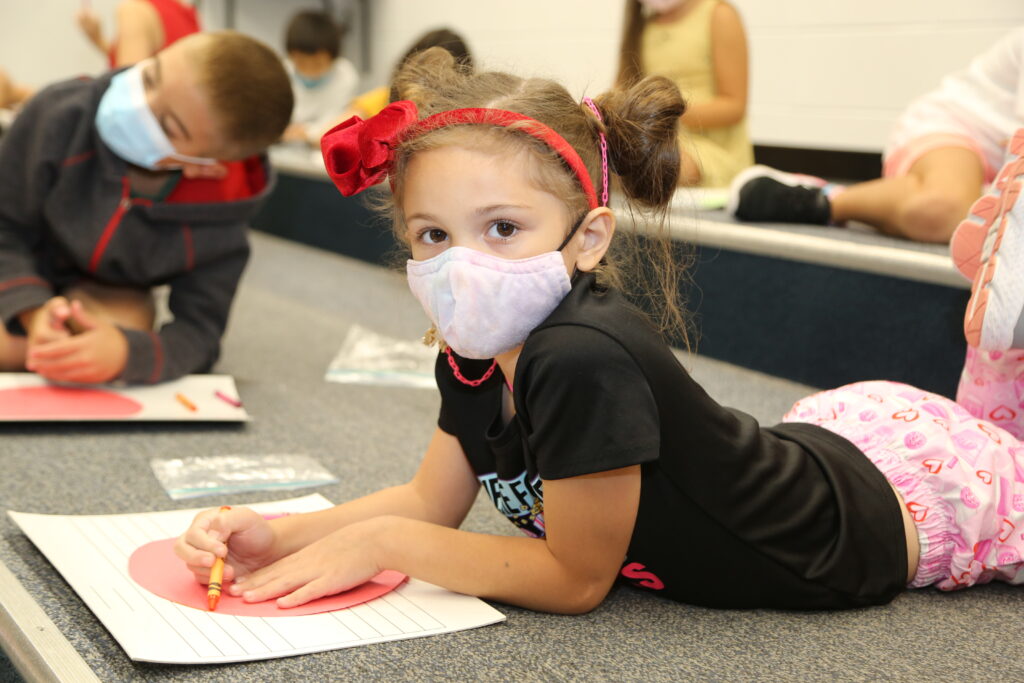
Longo has always been a champion of social-emotional learning, but this year, in particular, she sees the necessity of it—for students and teachers.
“I think it’s imperative, especially as we’re coming out of this unusual year that we’ve had, that we take a step back and shift our focus, because we’ve been working so hard to make education work for our students,” Longo said. “But I think that at the end of the day, we need to focus on our students, and we need to make sure that they are socially and emotionally ready and prepared and able to move forward and process what has happened to them, their families, and their ability to learn. We can’t just forget about what they went through and what we went through over the past two years. Not only do we need to make sure that they’re prepared, but I think that in order for us, as teachers, to make sure our kids are OK and that we are delivering social-emotional learning effectively throughout our curriculum, we need to make sure that teachers are prepared.”
Longo feels districts need to place an emphasis on helping teachers and staff process what they have been through, so they can be better equipped to assist students.
“It would be a huge disservice to not take the time to focus on the teachers and staff and what they need and for them to have the opportunity to process what they felt and are currently feeling,” Longo said. “One excellent way to process strong feelings is through the arts; this is a synergistic pairing. We help educators process the pandemic by using the arts, we model for them how they can use it with their students, and we increase the collaborative environment in our schools to help educators work together to develop lessons that emphasize social-emotional learning.”
Kathryn Coulibaly is the associate editor of the NJEA Review and provides content and support to njea.org. She can be reached at kcoulibaly@njea.org.
